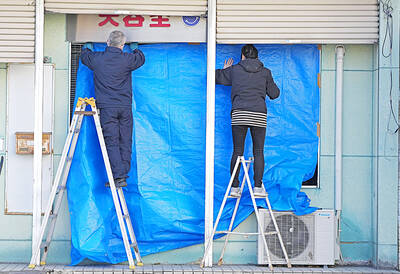As Taiwan struggles to enhance its submarine fleet, China is rapidly improving its anti-submarine warfare program, a study from Stratfor Global Intelligence said.
Stratfor is a US geopolitical intelligence firm that provides strategic analysis and forecasting to organizations around the world.
The days of Beijing relying on naval mines and depth charges for defense are coming to an end, the study said.
According to Stratfor, China has added Gaoxin-6 anti-submarine airplanes to its North Sea fleet, ramped up production of anti-submarine corvettes and equipped surface vessels with advanced detection equipment in the form of active variable-depth sonar and passive towed array sonar.
Stratfor said that China is also adding acoustic decoys and providing surface vessels with homing torpedoes.
The study came as high-level officials from Taiwan and the US meet in Washington this week for annual top-secret defense and security talks, during which Taiwan’s appeal for US help with its indigenous diesel-electric submarine program is believed to be on the agenda.
“The Chinese have been conducting extensive surveys and mapping of operating areas such as the South China Sea and are building a network of underwater sensors to detect submarines across the South and East China seas,” Stratfor said.
“On top of this, the [Chinese] military is experimenting with unmanned underwater vehicles with anti-submarine warfare applications. Most important, Chinese sailors, aircrew and technicians are consistently training to improve their skills,” it added.
Stratfor said that despite these advances, China’s anti-submarine defenses are still not sufficiently advanced or capable.
“While China could adequately clash with weaker powers such as Vietnam or Taiwan, the navy lacks the means to operate in the deep waters of the open ocean. It could not counter US nuclear submarines or even sophisticated diesel-electric submarines such as Japan’s.”
The study said that South Korea, Japan, Malaysia and Vietnam are developing or fielding large numbers of advanced diesel-electric submarines, a number of which are air-independent propulsion models, able to remain submerged for longer periods.
“Taiwan, a principal focus of Chinese war planning, is determined to build up its submarine fleet. With these improvements China now must contend with multiple submarine threats in most potential conflicts, making anti-submarine capabilities crucial,” the study said.
The study said that anti-submarine warfare is complex — equal parts art and science.
“It will take China years, if not decades, to become highly proficient in the craft. Moreover, the skillset is highly perishable. US Navy personnel even attest to how anti-submarine capabilities wane while the military focuses on other missions,” it said.

Taiwanese were praised for their composure after a video filmed by Taiwanese tourists capturing the moment a magnitude 7.5 earthquake struck Japan’s Aomori Prefecture went viral on social media. The video shows a hotel room shaking violently amid Monday’s quake, with objects falling to the ground. Two Taiwanese began filming with their mobile phones, while two others held the sides of a TV to prevent it from falling. When the shaking stopped, the pair calmly took down the TV and laid it flat on a tatami mat, the video shows. The video also captured the group talking about the safety of their companions bathing

US climber Alex Honnold is to attempt to scale Taipei 101 without a rope and harness in a live Netflix special on Jan. 24, the streaming platform announced on Wednesday. Accounting for the time difference, the two-hour broadcast of Honnold’s climb, called Skyscraper Live, is to air on Jan. 23 in the US, Netflix said in a statement. Honnold, 40, was the first person ever to free solo climb the 900m El Capitan rock formation in Yosemite National Park — a feat that was recorded and later made into the 2018 documentary film Free Solo. Netflix previewed Skyscraper Live in October, after videos

Starting on Jan. 1, YouBike riders must have insurance to use the service, and a six-month trial of NT$5 coupons under certain conditions would be implemented to balance bike shortages, a joint statement from transportation departments across Taipei, New Taipei City and Taoyuan announced yesterday. The rental bike system operator said that coupons would be offered to riders to rent bikes from full stations, for riders who take out an electric-assisted bike from a full station, and for riders who return a bike to an empty station. All riders with YouBike accounts are automatically eligible for the program, and each membership account

A classified Pentagon-produced, multiyear assessment — the Overmatch brief — highlighted unreported Chinese capabilities to destroy US military assets and identified US supply chain choke points, painting a disturbing picture of waning US military might, a New York Times editorial published on Monday said. US Secretary of Defense Pete Hegseth’s comments in November last year that “we lose every time” in Pentagon-conducted war games pitting the US against China further highlighted the uncertainty about the US’ capability to intervene in the event of a Chinese invasion of Taiwan. “It shows the Pentagon’s overreliance on expensive, vulnerable weapons as adversaries field cheap, technologically